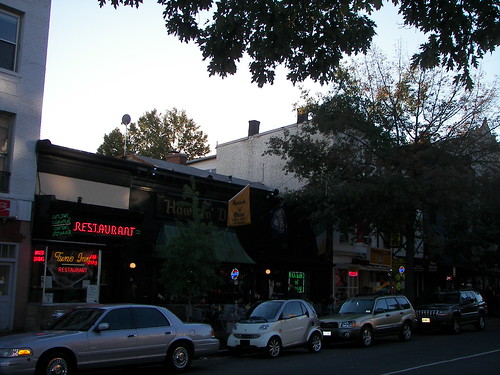When law is counterproductive to innovation
... the reason that I am fine with running stop signs and street lights as a bicyclist using the Idaho Stop method--which allows you to do so only when there is no oncoming traffic or significant breaks in traffic--is because the value of biking short distances comes from being able to move without stopping, so that a trip up to five miles is less than 30 minutes--during rush periods, typically the average speed in certain areas of the city is less than 20 mph, so a bike is competitive with other modes, and faster if you take into account walking into and out of a train station, or to and from a bus stop,time waiting for a train or bus, or if driving, the time spent finding a parking space, and then walking to your final destination. With a bike, you leave immediately from your origin point and arrive directly at your destination.
Similarly, with a SmartCar, which is 65.1 inches wide and 101.1 inches long, the value of it as a "technology" or solution is its smallness and the ability to be parked in small spaces.

A regular parallel parking space could fit not quite two cars, you could park two SmartCars, if it were legal to park perpendicular to the street. Except it isn't.
Which is why a police officer in Newport, Oregon ticketed a SmartCar parked in such a fashion, and they admonished people not to park similarly via their Facebook page.
Were parking and curbspace management practices focused a bit more on optimization, allowing SmartCars to be parked perpendicularly would be allowed.
Note that street-based motorcycle/moped parking on the street, bike corrals, and bike sharing stations organize their use of space "perpindicularly" to maximize their use of space.
To promote the use of smaller cars in cities, SmartCars and other similarly sized cars ought to be allowed to be parked perpindicular to the travel lanes on a street.
Labels: asset management, car culture and automobility, parking and curbside management, traffic engineering




0 Comments:
Post a Comment
<< Home